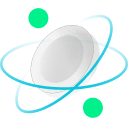Bitget: ติด 4 อันดับแรกตามปริมาณการเทรดรายวันทั่วโลก!
ส่วนแบ่งตลาด BTC61.26%
รายการลิสต์ใหม่บน Bitget : Pi Network
BTC/USDT$82897.98 (-1.69%)ดัชนีความกลัวและความโลภ32(กลัว)
ดัชนี Altcoin Season:0(Bitcoin Season)
เหรียญที่ลิสต์ใน Pre-MarketPAWS,WCTกระแสสุทธิของ Bitcoin Spot ETF ทั้งหมด: -$93.2M (1 วัน); +$445.2M (7 วัน)แพ็กเกจของขวัญต้อนรับสำหรับผู้ใช้ใหม่มูลค่า 6,200 USDTเคลมเลย
เทรดได้ทุกที่ทุกเวลากับแอป Bitget ดาวน์โหลดเลย
Bitget: ติด 4 อันดับแรกตามปริมาณการเทรดรายวันทั่วโลก!
ส่วนแบ่งตลาด BTC61.26%
รายการลิสต์ใหม่บน Bitget : Pi Network
BTC/USDT$82897.98 (-1.69%)ดัชนีความกลัวและความโลภ32(กลัว)
ดัชนี Altcoin Season:0(Bitcoin Season)
เหรียญที่ลิสต์ใน Pre-MarketPAWS,WCTกระแสสุทธิของ Bitcoin Spot ETF ทั้งหมด: -$93.2M (1 วัน); +$445.2M (7 วัน)แพ็กเกจของขวัญต้อนรับสำหรับผู้ใช้ใหม่มูลค่า 6,200 USDTเคลมเลย
เทรดได้ทุกที่ทุกเวลากับแอป Bitget ดาวน์โหลดเลย
Bitget: ติด 4 อันดับแรกตามปริมาณการเทรดรายวันทั่วโลก!
ส่วนแบ่งตลาด BTC61.26%
รายการลิสต์ใหม่บน Bitget : Pi Network
BTC/USDT$82897.98 (-1.69%)ดัชนีความกลัวและความโลภ32(กลัว)
ดัชนี Altcoin Season:0(Bitcoin Season)
เหรียญที่ลิสต์ใน Pre-MarketPAWS,WCTกระแสสุทธิของ Bitcoin Spot ETF ทั้งหมด: -$93.2M (1 วัน); +$445.2M (7 วัน)แพ็กเกจของขวัญต้อนรับสำหรับผู้ใช้ใหม่มูลค่า 6,200 USDTเคลมเลย
เทรดได้ทุกที่ทุกเวลากับแอป Bitget ดาวน์โหลดเลย

ที่เกี่ยวข้องกับเหรียญ
เครื่องคำนวณราคา
ประวัติราคา
การคาดการณ์ราคา
การวิเคราะห์ทางเทคนิค
คู่มือการซื้อเหรียญ
หมวดหมู่คริปโต
เครื่องคำนวณกำไร
ที่เกี่ยวข้องกับการเทรด
ซื้อ/ขาย
การฝาก/การถอน
Spot
Margin
USDT-M Futures
Coin-M Futures
บอทเทรด
Copy Trading
Earn
Pre-Market

ราคา GasGAS
ลิสต์แล้ว
สกุลเงินอ้างอิง:
THB
฿89.73-3.76%1D
ตารางราคา
TradingView
อัปเดตล่าสุดเมื่อ 2025-03-30 01:45:17(UTC+0)
มูลค่าตามราคาตลาด:฿5,831,516,478.29
Fully Diluted Market Cap:฿5,831,516,478.29
ปริมาณ (24 ชม.):฿160,864,240.43
ปริมาณ 24 ชม. / มูลค่าตามราคาตลาด:2.75%
สูงสุด 24 ชม.:฿93.77
ต่ำสุด 24 ชม.:฿87.88
All Time High:฿3,289.72
All Time Low:฿20.22
อุปทานหมุนเวียน:64,992,332 GAS
อุปทานทั้งหมด:
64,992,331GAS
อัตราการหมุนเวียน:100.00%
อุปทานสูงสุด:
--GAS
ราคาเป็น BTC:0.{4}3204 BTC
ราคาเป็น ETH:0.001444 ETH
ราคาจากมูลค่าตามราคาตลาด BTC:
฿855,126.46
ราคาจากมูลค่าตามราคาตลาด ETH:
฿115,316.65
สัญญา:
0xdE41...de60EfF(Neo)
เพิ่มเติม
คุณรู้สึกอย่างไรบ้างเกี่ยวกับ Gas ในวันนี้
หมายเหตุ: ข้อมูลนี้ใช้สำหรับอ้างอิงเท่านั้น
ราคาของ Gas วันนี้
ราคาแบบเรียลไทม์ของ Gas ในวันนี้ คือ ฿89.73 ต่อ (GAS / THB) และมูลค่าตามราคาตลาดในปัจจุบันอยู่ที่ ฿5.83B THB โดยมีปริมาณการเทรด 24 ชั่วโมงอยู่ที่ ฿160.86M THB ราคา GAS ต่อ THB จะได้รับการอัปเดตเรียลไทม์ Gas เปลี่ยนแปลงไป -3.76% ใน 24 ชั่วโมงที่ผ่านมา ส่วนอุปทานหมุนเวียน คือ 64,992,332
ราคาสูงสุดของ GAS คือเท่าไร
GAS ขึ้นไปแตะ All Time High (ATH) ที่ ฿3,289.72 เมื่อ 2018-01-15
ราคาสูงสุดของ GAS คือเท่าไร
GAS ขึ้นไปแตะ All Time High (ATH) ที่ ฿20.22 เมื่อ 2020-03-13
การคาดการณ์ราคา Gas
ช่วงไหนเป็นจังหวะที่ดีในการซื้อ GAS ตอนนี้ควรซื้อหรือขาย GAS
เมื่อตัดสินใจว่าจะซื้อหรือขาย GAS คุณต้องพิจารณากลยุทธ์การเทรดของคุณเองก่อน อีกทั้งรูปแบบการเทรดของนักเทรดระยะยาวกับนักเทรดระยะสั้นก็แตกต่างกันด้วยเช่นกัน การวิเคราะห์ทางเทคนิค GAS จาก Bitget จึงเข้ามาช่วยให้คุณมีข้อมูลอ้างอิงสำหรับการเทรด
เมื่อดูตาม การวิเคราะห์ทางเทคนิค GAS 4 ชม. แล้ว พบว่า Signal ในการเทรดคือ ขายมาก
เมื่อดูตาม การวิเคราะห์ทางเทคนิค GAS 1 วัน แล้ว พบว่า Signal ในการเทรดคือ ขายมาก
เมื่อดูตาม การวิเคราะห์ทางเทคนิค GAS 1 สัปดาห์ แล้ว พบว่า Signal ในการเทรดคือ ขายมาก
ราคา GAS จะเป็นเท่าใดในปี 2026
จากโมเดลคาดการณ์ผลตอบแทนราคา GAS ในอดีต คาดว่าราคา GAS จะถึง ฿106.78 ใน 2026
ราคา GAS จะเป็นเท่าใดในปี 2031
ในปี 2031 ราคา GAS คาดว่าจะเปลี่ยนแปลง +16.00% โดยภายในสิ้นปี 2031 ราคา GAS คาดว่าจะแตะ ฿268.05 และมี ROI สะสม +190.30%
ประวัติราคา Gas (THB)
ราคาของ Gas ปรับตัว -61.66% ในช่วงปีที่ผ่านมา ราคาสูงสุดของ GAS เป็น THB ในปีที่แล้วอยู่ที่ ฿258.61 และราคาต่ำสุดของ GAS เป็น THB ในปีที่แล้วอยู่ที่ ฿84.11
เวลาการเปลี่ยนแปลงราคา (%) ราคาต่ำสุด
ราคาต่ำสุด ราคาสูงสุด
ราคาสูงสุด 
 ราคาต่ำสุด
ราคาต่ำสุด ราคาสูงสุด
ราคาสูงสุด 
24h-3.76%฿87.88฿93.77
7d-10.12%฿87.88฿104.22
30d-21.24%฿85.13฿123.17
90d-42.07%฿85.13฿231.68
1y-61.66%฿84.11฿258.61
ตลอดกาล+49.82%฿20.22(2020-03-13, 5 ปีที่ผ่านมา )฿3,289.72(2018-01-15, 7 ปีที่ผ่านมา )
ข้อมูลตลาดของ Gas
ประวัติมูลค่าตามราคาตลาด Gas
ตลาด Gas
ยอดถือครอง Gas ตามการกระจุกตัว
วาฬ
นักลงทุน
รายย่อย
Gas Address ตามระยะเวลาถือครอง
ผู้ถือ
นักท่องเที่ยว
นักเทรด
กราฟราคา coinInfo.name (12) แบบเรียลไทม์

เรตติ้ง Gas
เรตติ้งโดยเฉลี่ยจากชุมชน
4.4
คอนเทนต์นี้มีจุดประสงค์เพื่อให้ข้อมูลเท่านั้น
GAS เป็นสกุลเงินท้องถิ่น
1 GAS เป็น MXN$54.21 GAS เป็น GTQQ20.511 GAS เป็น CLP$2,502.91 GAS เป็น UGXSh9,735.481 GAS เป็น HNLL68.021 GAS เป็น ZARR48.631 GAS เป็น TNDد.ت8.271 GAS เป็น IQDع.د3,483.11 GAS เป็น TWDNT$88.281 GAS เป็น RSDдин.288.871 GAS เป็น DOP$168.081 GAS เป็น MYRRM11.791 GAS เป็น GEL₾7.381 GAS เป็น UYU$112.121 GAS เป็น MADد.م.25.721 GAS เป็น AZN₼4.521 GAS เป็น OMRر.ع.1.021 GAS เป็น SEKkr26.621 GAS เป็น KESSh343.691 GAS เป็น UAH₴110.29
- 1
- 2
- 3
- 4
- 5
อัปเดตล่าสุดเมื่อ 2025-03-30 01:45:17(UTC+0)
วิธีซื้อ Gas(GAS)

สร้างบัญชี Bitget ของคุณแบบฟรีๆ
สมัคร Bitget ด้วยที่อยู่อีเมล/หมายเลขโทรศัพท์มือถือของคุณ แล้วสร้างรหัสผ่านที่แข็งแกร่งเพื่อรักษาความปลอดภัยให้บัญชีของคุณ

ยืนยันบัญชีของคุณ
ยืนยันตัวตนของคุณด้วยการป้อนข้อมูลส่วนบุคคลและอัปโหลดเอกสารระบุตัวตนที่ใช้ได้ ซึ่งเป็นเอกสารที่มีรูปภาพประกอบ (Photo ID)

แปลง Gas เป็น GAS
ใช้ตัวเลือกการชำระเงินหลากหลายเพื่อทำการซื้อ Gas บน Bitget เราจะสาธิตให้ดู
เรียนรู้เพิ่มเติมเทรด GAS Perpetual Futures
หลังจากทำการสมัครบน Bitget และซื้อ USDT หรือโทเค็น GAS สำเร็จแล้ว คุณสามารถเริ่มเทรดอนุพันธ์ รวมถึง GAS Futures และการเทรด Margin เพื่อเพิ่มรายได้ของคุณได้เลย
ราคาปัจจุบันของ GAS คือ ฿89.73 โดยมีการเปลี่ยนแปลงราคา 24 ชั่วโมงอยู่ที่ -3.76% นักเทรดสามารถทำกำไรได้จากการเปิด Long หรือ Short ใน GAS Futures
เข้าร่วม GAS Copy Trading โดยการติดตาม Elite Trader
หลังจากทำการสมัครบน Bitget และซื้อ USDT หรือโทเค็น GAS สำเร็จแล้ว คุณยังสามารถเริ่ม Copy Trading ได้โดยการติดตาม Elite Trader
ข่าว Gas

Merlin Chain อัปเกรดกระเป๋าเงิน AA รองรับเหรียญแพลตฟอร์ม MERL เป็นโทเค็น GAS
Bitget•2024-11-13 12:39

โครงการมีม Daram เพิ่มขึ้นกว่า 420% ใน 24 ชั่วโมง ได้รับคำชมจาก Vitalik สองครั้ง
Bitget•2024-10-15 15:30

Osmosis รองรับเหรียญ Stablecoin ยูโร EURe สำหรับค่าธรรมเนียม GAS แล้ว
Bitget•2024-09-26 12:40

23 โปรโตคอล: ภาพรวมของรูปแบบโปรโตคอลการสรุปเชนในปัจจุบัน
Eric SJ(重开版)•2024-09-02 06:41

Futures GASUSDT เปิดเทรด Futures แล้ว
Bitget เปิดตัว GASUSDT Futures ในวันที่ 19 กรกฎาคม (UTC+7) เลเวอเรจสูงสุดที่ 50x. ขอเชิญชวนให้เข้ามาเทรด Futures ผ่านทางเว็บไซต์ทางการของเรา (www.bitget.com) หรือในแอป Bitget. GASUSDT-M Perpetual Futures: พารามิเตอร์ รายละเอียด เวลาลิสต์ 19 กรกฎาคม 2024 18:05 (UTC+8) สินทรัพย์อ้างอิง GAS สินทรัพย์ท
Bitget Announcement•2024-07-19 10:09
รายการลิสต์ใหม่บน Bitget
รายการลิสต์ใหม่
ซื้อเพิ่ม
คำถามที่พบบ่อย
ราคาปัจจุบันของ Gas คือเท่าไร
ราคาแบบเรียลไทม์ของ Gas อยู่ที่ ฿89.73 ตาม (GAS/THB) โดยมีมูลค่าตามราคาตลาดปัจจุบันที่ ฿5,831,516,478.29 THB มูลค่าของ Gas เผชิญกับความผันผวนถี่เนื่องจากตลาดคริปโตมีการเคลื่อนไหวอย่างต่อเนื่องตลอด 24 ชั่วโมงทุกวัน สามารถดูราคาปัจจุบันแบบเรียลไทม์และข้อมูลย้อนหลังของ Gas ได้ที่ Bitget
ปริมาณการเทรด 24 ชั่วโมงของ Gas คือเท่าไร
ในช่วง 24 ชั่วโมงที่ผ่านมา ปริมาณการเทรดของ Gas คือ ฿160.86M
All Time High ของ Gas คือเท่าไร
All Time High ของ Gas คือ ฿3,289.72 All Time High คือราคาสูงสุดสำหรับ Gas นับตั้งแต่เปิดตัวมา
ฉันสามารถซื้อ Gas บน Bitget ได้หรือไม่
แน่นอน เพราะ Gas พร้อมให้บริการแล้วบนแพลตฟอร์มแลกเปลี่ยนแบบรวมศูนย์ (Centralized Exchange) ของ Bitget สำหรับรายละเอียดการใช้งานเพิ่มเติม โปรดอ่านที่คู่มือ “วิธีซื้อ gas ” ของเรา
ฉันสามารถรับรายได้คงที่จากการลงทุนใน Gas ได้ไหม
แน่นอน! Bitget ให้บริการ แพลตฟอร์มเทรดเชิงกลยุทธ์ พร้อมบอทเทรดอัจฉริยะเพื่อให้คุณเทรดและทำกำไรได้โดยอัตโนมัติ
ฉันจะซื้อ Gas ด้วยค่าธรรมเนียมต่ำที่สุดได้จากที่ไหน
เรายินดีที่จะประกาศว่า แพลตฟอร์มเทรดเชิงกลยุทธ์ พร้อมให้บริการแล้วบนแพลตฟอร์มแลกเปลี่ยน Bitget Bitget มีค่าธรรมเนียมการเทรดและความลึกของตลาดระดับแนวหน้าในวงการ เพื่อการันตีว่านักเทรดจะได้รับผลกำไรจากการลงทุน
ซื้อ Gas (GAS) ได้ที่ไหน
ส่วนวิดีโอ — ยืนยันฉับไว เทรดได้รวดเร็ว

วิธียืนยันตัวตนบน Bitget ให้เสร็จสิ้นและป้องกันตนเองจากการฉ้อโกง
1. เข้าสู่ระบบไปยังบัญชี Bitget ของคุณ
2. หากคุณเป็นผู้ใช้ใหม่ของ Bitget โปรดดูบทช่วยสอนของเราเรื่องวิธีสร้างบัญชี
3. ชี้เมาส์ไปที่ไอคอนโปรไฟล์ของคุณ จากนั้นคลิกที่ “ไม่ได้รับการยืนยัน / Unverified” แล้วคลิก “ยืนยัน / Verify”
4. เลือกประเทศหรือภูมิภาคที่ออกและประเภทเอกสารระบุตัวตนของคุณ แล้วทำตามขั้นตอนที่ปรากฏ
5. เลือก “การยืนยันทางโทรศัพท์มือถือ / Mobile Verification” หรือ “PC” ตามต้องการ
6. ป้อนรายละเอียดของคุณ ส่งสำเนาเอกสารระบุตัวตน และถ่ายภาพเซลฟี
7. ส่งใบสมัครของคุณ เท่านี้ก็เรียบร้อย คุณเสร็จสิ้นการยืนยันตัวตนแล้ว!
การลงทุนในคริปโทเคอร์เรนซี รวมถึงการซื้อ Gas ออนไลน์ผ่าน Bitget นั้นอยู่ภายใต้ความเสี่ยงในตลาด Bitget พร้อมให้บริการวิธีที่ง่ายดายและสะดวกสำหรับซื้อ Gas และเราจะพยายามอย่างสุดความสามารถเพื่อให้ข้อมูลผู้ใช้เกี่ยวกับคริปโทเคอร์เรนซีแต่ละรายการที่เรามีให้บริการบนแพลตฟอร์ม อย่างไรก็ตาม Bitget จะมิได้มีส่วนรับผิดชอบต่อผลลัพธ์ที่อาจเกิดขึ้นจากการซื้อ Gas ของคุณ หน้านี้และข้อมูลที่อยู่ในหน้านี้ไม่ใช่การสนับสนุนคริปโทเคอร์เรนซีรายการใดรายการหนึ่งแต่อย่างใด
Bitget Insights

AshuBajwaB60
8ชม.
# __The Future of Urban Planning: Designing Sustainable and Resilient Cities__
As the world's population continues to urbanize, cities are facing unprecedented challenges, from climate change and environmental degradation to social inequality and economic instability. To address these challenges, urban planners are rethinking the way cities are designed, prioritizing sustainability, resilience, and livability. In this article, we'll explore the future of urban planning, highlighting innovative strategies and technologies that are transforming the way we build and interact with cities.
# Sustainable Urban Planning Strategies
Sustainable urban planning strategies prioritize environmental, social, and economic sustainability, including:
1. *Green Infrastructure*: Incorporating green spaces, parks, and gardens into urban design to mitigate the urban heat island effect, manage stormwater runoff, and improve air quality.
2. *Mixed-Use Development*: Encouraging mixed-use development, which combines residential, commercial, and recreational spaces, to reduce the need for lengthy commutes and promote walkability.
3. *Public Transportation*: Investing in efficient and reliable public transportation systems, such as buses, trains, and bike-share programs, to reduce reliance on personal vehicles and decrease congestion.
4. *Energy-Efficient Buildings*: Designing energy-efficient buildings that incorporate renewable energy sources, such as solar and wind power, to reduce energy consumption and greenhouse gas emissions.
# Resilient Urban Planning Strategies
Resilient urban planning strategies prioritize adaptability and flexibility in the face of uncertainty and change, including:
1. *Climate-Resilient Design*: Designing cities and buildings to withstand the impacts of climate change, such as sea-level rise, extreme weather events, and heatwaves.
2. *Adaptive Reuse*: Repurposing and reusing existing buildings and infrastructure to reduce waste, conserve resources, and promote urban renewal.
3. *Community Engagement*: Fostering community engagement and participation in urban planning processes to ensure that cities are designed to meet the needs of all residents.
4. *Innovative Technologies*: Leveraging innovative technologies, such as smart grids, green roofs, and urban agriculture, to enhance urban resilience and sustainability.
# Innovative Urban Planning Technologies
Innovative urban planning technologies are transforming the way cities are designed and managed, including:
1. *Geographic Information Systems (GIS)*: Using GIS to analyze and visualize urban data, such as population density, transportation patterns, and environmental factors.
2. *Building Information Modeling (BIM)*: Utilizing BIM to design and manage buildings, reducing construction costs and improving energy efficiency.
3. *Smart City Sensors*: Deploying smart city sensors to monitor and manage urban infrastructure, such as traffic flow, air quality, and energy usage.
4. *Urban Simulation Modeling*: Using urban simulation modeling to predict and analyze the impacts of urban planning decisions, such as population growth, transportation patterns, and environmental changes.
# Conclusion
The future of urban planning is focused on designing sustainable and resilient cities that prioritize environmental, social, and economic sustainability. By incorporating innovative strategies and technologies, urban planners can create cities that are adaptable, flexible, and responsive to the needs of all residents.
# Recommendations
1. *Integrate Green Infrastructure*: Incorporate green infrastructure, such as parks, gardens, and green roofs, into urban design to mitigate the urban heat island effect and improve air quality.
2. *Promote Mixed-Use Development*: Encourage mixed-use development, which combines residential, commercial, and recreational spaces, to reduce the need for lengthy commutes and promote walkability.
3. *Invest in Public Transportation*: Invest in efficient and reliable public transportation systems, such as buses, trains, and bike-share programs, to reduce reliance on personal vehicles and decrease congestion.
4. *Support Innovative Technologies*: Support innovative technologies, such as smart grids, green roofs, and urban agriculture, to enhance urban resilience and sustainability.
5. *Foster Community Engagement*: Foster community engagement and participation in urban planning processes to ensure that cities are designed to meet the needs of all residents.
ISLAND+0.44%
GAS+0.60%

AshuBajwaB60
8ชม.
# __The Power of Renewable Energy: Harnessing the Sun, Wind, and Water to Create a Sustainable
As the world grapples with the challenges of climate change, energy security, and sustainable development, renewable energy has emerged as a vital component of a cleaner, greener future. The sun, wind, and water offer vast, untapped energy sources that can power our homes, industries, and transportation systems, reducing our reliance on fossil fuels and mitigating the impacts of climate change. In this article, we'll explore the power of renewable energy, its benefits, challenges, and potential applications.
# Benefits of Renewable Energy
Renewable energy offers numerous benefits, including:
1. *Reduced Greenhouse Gas Emissions*: Renewable energy sources emit significantly less greenhouse gases, contributing less to climate change.
2. *Energy Security*: Renewable energy reduces dependence on imported fossil fuels, improving energy security and reducing the risks associated with price volatility.
3. *Job Creation and Economic Growth*: The renewable energy industry is creating new job opportunities and driving economic growth, particularly in rural areas.
4. *Improved Air Quality*: Renewable energy reduces air pollution, improving public health and quality of life.
5. *Water Conservation*: Most renewable energy sources require very little water to operate, unlike traditional fossil fuel-based power plants.
# Challenges Facing Renewable Energy
Despite the benefits, renewable energy faces several challenges, including:
1. *Intermittency*: Renewable energy sources like solar and wind are intermittent, requiring energy storage solutions to ensure a stable power supply.
2. *High Upfront Costs*: While the cost of renewable energy technologies is decreasing, the upfront investment can still be prohibitively expensive for some individuals and businesses.
3. *Infrastructure and Grid Integration*: Widespread adoption of renewable energy requires significant investments in infrastructure, including transmission lines, storage facilities, and grid management systems.
4. *Policy and Regulation*: Renewable energy development is often hindered by inadequate policies and regulations, which can create uncertainty and barriers to investment.
# Potential Applications of Renewable Energy
Renewable energy has numerous potential applications, including:
1. *Power Generation*: Renewable energy can power homes, industries, and transportation systems, reducing our reliance on fossil fuels.
2. *Heating and Cooling*: Renewable energy can provide heating and cooling solutions, such as solar water heaters and geothermal heat pumps.
3. *Transportation*: Renewable energy can power electric vehicles, reducing greenhouse gas emissions and improving air quality.
4. *Rural Development*: Renewable energy can provide energy access to rural communities, promoting economic development and improving quality of life.
# Conclusion
Renewable energy is a vital component of a sustainable future, offering numerous benefits, including reduced greenhouse gas emissions, energy security, job creation, and improved air quality. While challenges remain, the potential applications of renewable energy are vast, and continued innovation, investment, and policy support can help overcome the barriers to widespread adoption.
# Recommendations
1. *Invest in Renewable Energy Technologies*: Invest in renewable energy technologies, such as solar panels, wind turbines, and energy storage systems.
2. *Support Renewable Energy Policies*: Support policies and regulations that promote renewable energy development, such as tax incentives, net metering laws, and renewable portfolio standards.
3. *Encourage Energy Efficiency*: Encourage energy efficiency practices, such as using energy-efficient appliances, turning off lights, and insulating buildings.
4. *Promote Education and Awareness*: Promote education and awareness about the benefits of renewable energy, its potential applications, and the challenges it faces.
5. *Support Research and Development*: Support research and development in renewable energy technologies, focusing on improving efficiency, reducing costs, and addressing intermittency challenges.
FUEL+3.71%
GAS+0.60%
URBestTrader
9ชม.
Why ETH is Stuck at $1800 – What’s Next?
Ethereum (ETH), the second-largest cryptocurrency, has been hovering around the $1800 mark for quite some time. Traders and investors are wondering: Why is ETH stuck at this level, and where is it headed next? Let’s dive into the factors affecting its price and what could drive the next move.
1. Market Sentiment and Macro Factors
Global macroeconomic conditions, including inflation rates, interest rate hikes, and regulatory uncertainty, have kept crypto markets in check. The Federal Reserve’s monetary policy plays a crucial role in risk asset movements, including ETH. When liquidity tightens, crypto struggles to gain momentum.
2. ETH’s On-Chain Activity and Demand
Ethereum’s network activity, including DeFi and NFT transactions, has slowed down compared to its 2021 peak. Lower transaction volumes and reduced demand for ETH gas fees contribute to price stagnation. However, developments like Ethereum’s layer-2 scaling solutions (Arbitrum, Optimism, zkSync) are helping increase adoption and reduce costs.
3. Institutional Interest and ETF Speculations
While Bitcoin ETFs have gained traction, Ethereum ETF approvals remain uncertain. If ETH ETFs get the green light, institutional demand could surge, pushing ETH beyond $1800. The recent BlackRock and Fidelity interest in ETH-related products indicates potential for long-term growth.
4. Technical Analysis – Resistance at $1800
From a technical perspective, ETH faces strong resistance at $1800. Several attempts to break above this level have resulted in rejections. If ETH can establish strong support above this price, it could aim for the next major resistance at $2000-$2200. However, failure to hold could see ETH drop to $1600 or lower.
5. The Road Ahead – Bullish or Bearish?
Bullish Case: If ETH ETFs get approved, on-chain activity picks up, and the macro environment improves, ETH could rally past $2000.
Bearish Case: If regulatory pressure increases and market sentiment weakens, ETH might struggle to sustain above $1800 and drop to key support zones.
Final Thoughts
Ethereum’s current price stagnation is a mix of macroeconomic headwinds, reduced network activity, and technical resistance. However, upcoming catalysts like ETFs, layer-2 adoption, and macro improvements could push ETH beyond $1800. Are you bullish or bearish on ETH? Share your thoughts in the comments!
🚀 Follow for more crypto insights! 🚀
MOVE-0.11%
ETH+0.32%

AshuBajwaB60
9ชม.
# __The Impact of Climate Change on Global Food Systems: A Growing Concern__
Climate change is havin
Climate change is having a profound impact on global food systems, affecting the availability, quality, and accessibility of food. Rising temperatures, changing precipitation patterns, and increased frequency of extreme weather events are altering the conditions under which crops are grown, livestock are raised, and food is produced, processed, and distributed. In this article, we'll examine the effects of climate change on global food systems and explore potential solutions to mitigate these impacts.
# Effects of Climate Change on Food Systems
Climate change is affecting food systems in various ways, including:
1. *Changes in Temperature and Precipitation Patterns*: Rising temperatures and changing precipitation patterns are altering the growing conditions for crops, leading to reduced yields, lower quality crops, and changes in growing seasons.
2. *Increased Frequency of Extreme Weather Events*: Extreme weather events, such as droughts, floods, and heatwaves, are becoming more frequent and intense, damaging crops, disrupting food supplies, and affecting food prices.
3. *Shifts in Growing Seasons and Regions*: Climate change is causing shifts in growing seasons and regions, leading to changes in the types of crops that can be grown, the timing of planting and harvesting, and the distribution of food.
4. *Impacts on Livestock and Fisheries*: Climate change is affecting the health, productivity, and distribution of livestock and fisheries, leading to changes in the availability and quality of animal-based food products.
# Consequences of Climate Change on Food Security
The impacts of climate change on food systems have significant consequences for food security, including:
1. *Reduced Food Availability*: Climate change is reducing food availability by decreasing crop yields, altering growing seasons, and disrupting food supplies.
2. *Increased Food Prices*: Climate-related shocks to food systems can lead to price volatility, making food less accessible to vulnerable populations.
3. *Changes in Food Quality*: Climate change is affecting the quality of food, leading to changes in nutritional content, texture, and flavor.
4. *Increased Food Insecurity*: Climate change is exacerbating existing food security challenges, particularly for vulnerable populations, such as the poor, women, and children.
# Solutions to Mitigate the Impacts of Climate Change on Food Systems
To mitigate the impacts of climate change on food systems, we need to adopt a multi-faceted approach that includes:
1. *Sustainable Agriculture Practices*: Promote sustainable agriculture practices, such as agroforestry, permaculture, and regenerative agriculture, that enhance soil health, biodiversity, and ecosystem services.
2. *Climate-Smart Agriculture*: Implement climate-smart agriculture practices that take into account projected climate changes, such as using drought-tolerant crops, adjusting planting dates, and implementing conservation agriculture.
3. *Food System Resilience*: Enhance food system resilience by promoting diversification, local food systems, and urban agriculture.
4. *Climate Change Adaptation and Mitigation*: Support climate change adaptation and mitigation efforts, such as reducing greenhouse gas emissions, promoting renewable energy, and implementing climate-resilient infrastructure.
# Conclusion
Climate change is having a profound impact on global food systems, affecting the availability, quality, and accessibility of food. To mitigate these impacts, we need to adopt a multi-faceted approach that includes sustainable agriculture practices, climate-smart agriculture, food system resilience, and climate change adaptation and mitigation efforts.
# Recommendations
1. *Support Sustainable Agriculture Practices*: Support sustainable agriculture practices by promoting agroforestry, permaculture, and regenerative agriculture.
2. *Implement Climate-Smart Agriculture*: Implement climate-smart agriculture practices that take into account projected climate changes.
3. *Enhance Food System Resilience*: Enhance food system resilience by promoting diversification, local food systems, and urban agriculture.
4. *Support Climate Change Adaptation and Mitigation*: Support climate change adaptation and mitigation efforts, such as reducing greenhouse gas emissions and promoting renewable energy.
5. *Promote Climate-Resilient Infrastructure*: Promote climate-resilient infrastructure, such as climate-resilient roads, bridges, and storage facilities.
GAS+0.60%

AshuBajwaB60
9ชม.
# __The Future of Sustainable Transportation: The Rise of Electric Vehicles__
As the world grapples with the challenges of climate change, air pollution, and energy sustainability, the transportation sector is undergoing a significant transformation. Electric vehicles (EVs) are emerging as a game-changer, offering a cleaner, more efficient, and cost-effective alternative to traditional fossil fuel-based transportation. In this article, we'll explore the rise of electric vehicles, their benefits, challenges, and potential applications.
# Benefits of Electric Vehicles
Electric vehicles offer numerous benefits, including:
1. *Zero Emissions*: EVs produce zero tailpipe emissions, reducing greenhouse gas emissions and air pollution in urban areas.
2. *Lower Operating Costs*: EVs are generally cheaper to run, with lower fuel costs (electricity is often less expensive than gasoline) and lower maintenance costs (fewer moving parts means less wear and tear).
3. *Improved Performance*: EVs typically have excellent acceleration and smooth, quiet operation.
4. *Government Incentives*: Many governments offer incentives, such as tax credits, rebates, and exemptions from certain fees, to encourage the adoption of EVs.
# Challenges Facing Electric Vehicles
Despite the benefits, EVs face several challenges, including:
1. *Limited Range and Charging Time*: EVs generally have limited range (typically between 200-300 miles) and charging time (although fast-charging technology is improving).
2. *Higher Upfront Costs*: EVs are often more expensive than traditional gasoline-powered vehicles, although costs are decreasing as technology improves.
3. *Limited Charging Infrastructure*: While charging infrastructure is expanding, it can still be a challenge to find charging stations, particularly in rural areas.
4. *Battery Durability and Recycling*: Concerns remain about the durability and recyclability of EV batteries.
# Potential Applications of Electric Vehicles
Electric vehicles have numerous potential applications, including:
1. *Personal Transportation*: EVs are ideal for personal transportation, particularly for short- to medium-distance trips.
2. *Public Transportation*: EVs are being increasingly adopted for public transportation, such as buses and taxis.
3. *Commercial Fleets*: EVs are being used for commercial fleets, such as delivery vans and trucks.
4. *Autonomous Vehicles*: EVs are being integrated into autonomous vehicle systems, enabling efficient and sustainable transportation.
# Conclusion
The rise of electric vehicles is transforming the transportation sector, offering a cleaner, more efficient, and cost-effective alternative to traditional fossil fuel-based transportation. While challenges remain, the benefits of EVs make them an attractive option for individuals, businesses, and governments. As technology continues to improve and charging infrastructure expands, EVs are poised to play an increasingly important role in shaping the future of sustainable transportation.
# Recommendations
1. *Consider Purchasing an EV*: If you're in the market for a new vehicle, consider purchasing an EV, particularly if you have access to charging infrastructure.
2. *Support EV-Friendly Policies*: Encourage your government to implement policies that support the adoption of EVs, such as tax incentives, rebates, and investments in charging infrastructure.
3. *Invest in EV Technology*: Consider investing in companies that specialize in EV technology, such as battery manufacturers, charging station operators, and EV manufacturers.
4. *Educate Yourself and Others*: Educate yourself and others about the benefits of EVs and the challenges they face, helping to promote a more sustainable transportation future.
5. *Encourage Businesses to Adopt EVs*: Encourage businesses to adopt EVs for their fleets, promoting a more sustainable and efficient transportation system.
FUEL+3.71%
GAS+0.60%
สินทรัพย์ที่เกี่ยวข้อง
คริปโทเคอร์เรนซียอดนิยม
รายการคริปโทเคอร์เรนซีที่มีมูลค่าตามราคาตลาดสูงที่สุด 8 อันดับแรก
เพิ่มเมื่อเร็วๆ นี้
คริปโทเคอร์เรนซีที่เพิ่มเข้ามาล่าสุด



































Social Data ของ Gas
ในช่วง 24 ชั่วโมงที่ผ่านมา คะแนนความเชื่อมั่นบนโซเชียลมีเดียสำหรับ Gas อยู่ที่ 3 และความเชื่อมั่นบนโซเชียลมีเดียต่อเทรนด์ราคาของ Gas มีลักษณะ Bullish ทั้งนี้ คะแนนโซเชียลมีเดียโดยรวมของ Gas อยู่ที่ 0 ซึ่งถูกจัดอยู่ในอันดับที่ 753 จากบรรดาคริปโทเคอร์เรนซีทั้งหมด
จากข้อมูลของ LunarCrush ในช่วง 24 ชั่วโมงที่ผ่านมา มีการกล่าวถึงคริปโทเคอร์เรนซีบนโซเชียลมีเดียทั้งหมด ครั้ง โดย Gas ได้รับการกล่าวถึงด้วยอัตราความถี่ 0.01% ซึ่งถูกจัดอยู่ในอันดับที่ 366 จากบรรดาคริปโทเคอร์เรนซีทั้งหมด
ในช่วง 24 ชั่วโมงที่ผ่านมา มีผู้ใช้ที่ไม่ซ้ำกันทั้งหมด 656 รายที่พูดคุยเกี่ยวกับ Gas โดยมีการกล่าวถึง Gas ทั้งหมด 67 ครั้ง อย่างไรก็ตาม เมื่อเปรียบเทียบกับช่วง 24 ชั่วโมงก่อนหน้านี้ พบว่าจำนวนผู้ใช้ที่ไม่ซ้ำกัน เพิ่มขึ้น ถึง 53% และจำนวนการกล่าวถึงทั้งหมด ลดลง ถึง 18%
บน Twitter มี Tweet ที่กล่าวถึง Gas ทั้งหมด 1 รายการในช่วง 24 ชั่วโมงที่ผ่านมา โดยใน Tweet ดังกล่าว มี 0% กำลัง Bullish กับ Gas, 100% กำลัง Bearish กับ Gas และ 0% อยู่ในสภาวะเป็นกลางกับ Gas
ใน Reddit มี 2 โพสต์ที่กล่าวถึง Gas ใน 24 ชั่วโมงที่ผ่านมา เมื่อเทียบกับช่วง 24 ชั่วโมงก่อนหน้า จำนวนการกล่าวถึงลดลงถึง 0%
ภาพรวมโซเชียลทั้งหมด
3